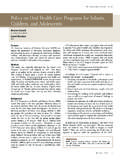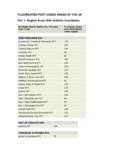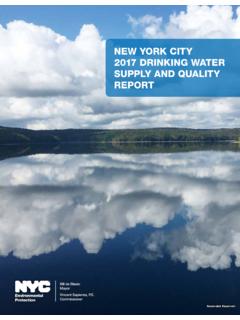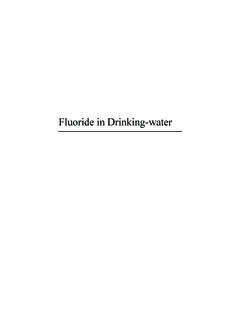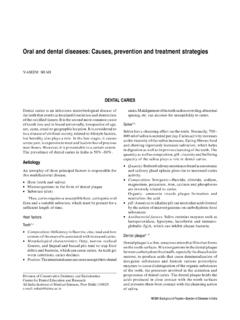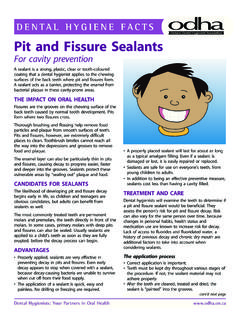Transcription of Review Council Latest Revision - aapd.org
1 OFFICIAL BUT UNFORMATTED Policy on Use of Fluoride Review Council Council on Clinical Affairs Latest Revision 2018 Purpose The American Academy of Pediatric Dentistry (AAPD) affirms that the use of fluoride as an adjunct in the prevention of caries is a safe and effective. The AAPD encourages dentist and other health care providers, public health officials, and parents/caregivers to optimize fluoride exposures to reduce the risk for caries and to enhance the remineralization of affected tooth structures.
2 Methods This document was originally developed by the Liaison with Other Groups Committee and adopted in 1967. This is an update from the last Revision in 2014. An electronic database search using the terms: fluoride, fluoridation, acidulated phosphate fluoride, fluoride varnish, fluoride therapy, and topical fluoride previously was conducted to develop and update this policy. The current update relied upon systematic reviews, expert opinions, and best current practices. The use of silver diamine fluoride is addressed in a separate AAPD Background The adjustment of the fluoride level in community water supplies to optimal concentration is the most beneficial and inexpensive method of reducing the occurrence of Long-term use of fluorides has reduced the cost of oral health care for children by as much as 50 When public water is fluoridated to an optimal level, there is a 35 percent reduction in decayed, missing.
3 Filled primary teeth and 26 percent fewer decayed, missing, and filled permanent The occurrence of fluorosis, causing esthetic concerns, has been reported to be 12 percent when public water contains ppm When combined with other dietary, oral hygiene and preventive measures5, the use of fluorides can further reduce the incidence of caries. Professional fluoride products should only be applied by or under the direction of a dentist or physician who is familiar with the child s oral health and has completed a caries risk assessment.
4 When fluoridation of drinking water is impossible, effective fluoride supplementation can be achieved through the intake of daily fluoride supplements according to established ,6-8 Before supplements are prescribed, it is essential to Review dietary sources of fluoride ( , all drinking water sources, consumed beverages, prepared food, toothpaste) to determine the patient s true exposure to fluoride,2,9,10 and to take into consideration the caries risk of the child. The mean fluoride concentration of ready-to-feed infant formulas in the is ppm for milk-based formulas and ppm for soy-based formulas11.
5 The more important issue, however, is the fluoride content of concentrated or powdered formula when reconstituted with fluoridated water. The range of fluoride in ppm for reconstituted powdered or liquid concentrate, when reconstituted with water containing 1ppm fluoride, is As the Environmental Protection Agency/Department of Health and Human Services recommendation12 for optimizing community water supplies to ppm F is instituted, fluorosis due to reconstituting infant formula with fluoridated water is less of an issue.
6 Significant cariostatic benefits can be achieved by the use of over-the-counter fluoride-containing preparations such as toothpastes, gels, and rinses, especially in areas without water The brushing of teeth with appropriate amounts of fluoride toothpaste twice daily for all children is Monitoring children s use of topical fluoride-containing products, including toothpaste, may prevent ingestion of excessive amounts of ,14 Numerous clinical trials have confirmed the anti-caries effect of professional topical fluoride treatments, including percent acidulated phosphate fluoride [(APF); percent F], five percent sodium fluoride varnish [(NaFV).]
7 Percent F], percent fluoride mouth rinse, and percent fluoride For children under the age of 6 years, 5 percent sodium fluoride varnish ( percent F) in unit doses, which reduce the potential for harm, is the recommended professionally-applied topical fluoride A significant number of parents and caregivers are concerned about their child receiving fluoride and may refuse fluoride treatment even though fluoride is safe and This is similar to opposition to community water Topical fluoride refusal and resistance may be a growing problem and mirror trends seen with vaccination refusal in medicine.
8 Policy statement The AAPD: Endorses and encourages the adjustment of fluoride content of public drinking water supplies to optimal levels where feasible. Endorses the supplementation of a child s diet with fluoride according to established guidelines when fluoride levels in public drinking water are suboptimal and after consideration of dietary fluoride and the caries risk of the child. Encourages the brushing of teeth with appropriate amounts of fluoride toothpaste twice daily for all children.
9 Encourages the application of professional fluoride treatments for all individuals at risk for dental caries. Encourages dental professionals to inform medical peers of the potential of enamel fluorosis when excess fluoride is ingested prior to enamel maturation. Encourages the continued research on safe and effective fluoride products. Supports the delegation of fluoride application to auxiliary dental personnel or other trained allied health professionals by prescription or order of a dentist after a comprehensive oral examination or by a physician after a dental screening has been performed.
10 Encourages all beverage and infant formula manufacturers to include fluoride concentration with the nutritional content on food labels. Recognizes that drinking fluoridated water and brushing with fluoridated toothpaste twice daily are the most effective method in reducing dental caries prevalence in children. Encourages dental providers to talk to parents and caregivers about the benefits of fluoride and to proactively address fluoride hesitance through chairside and community education.



